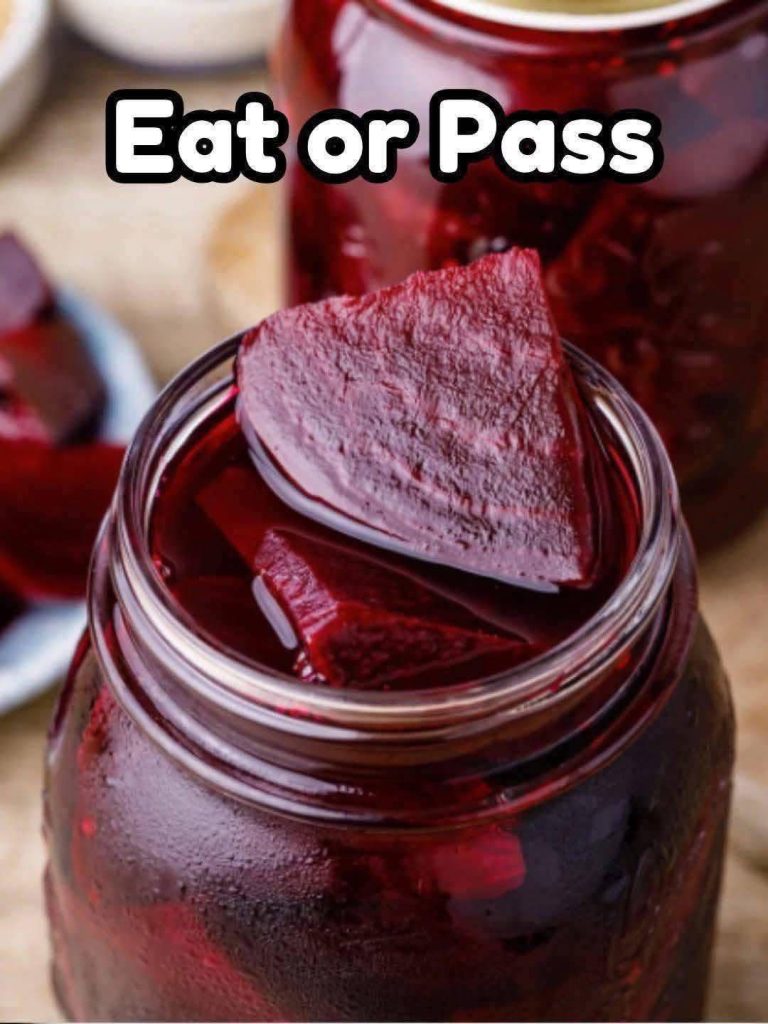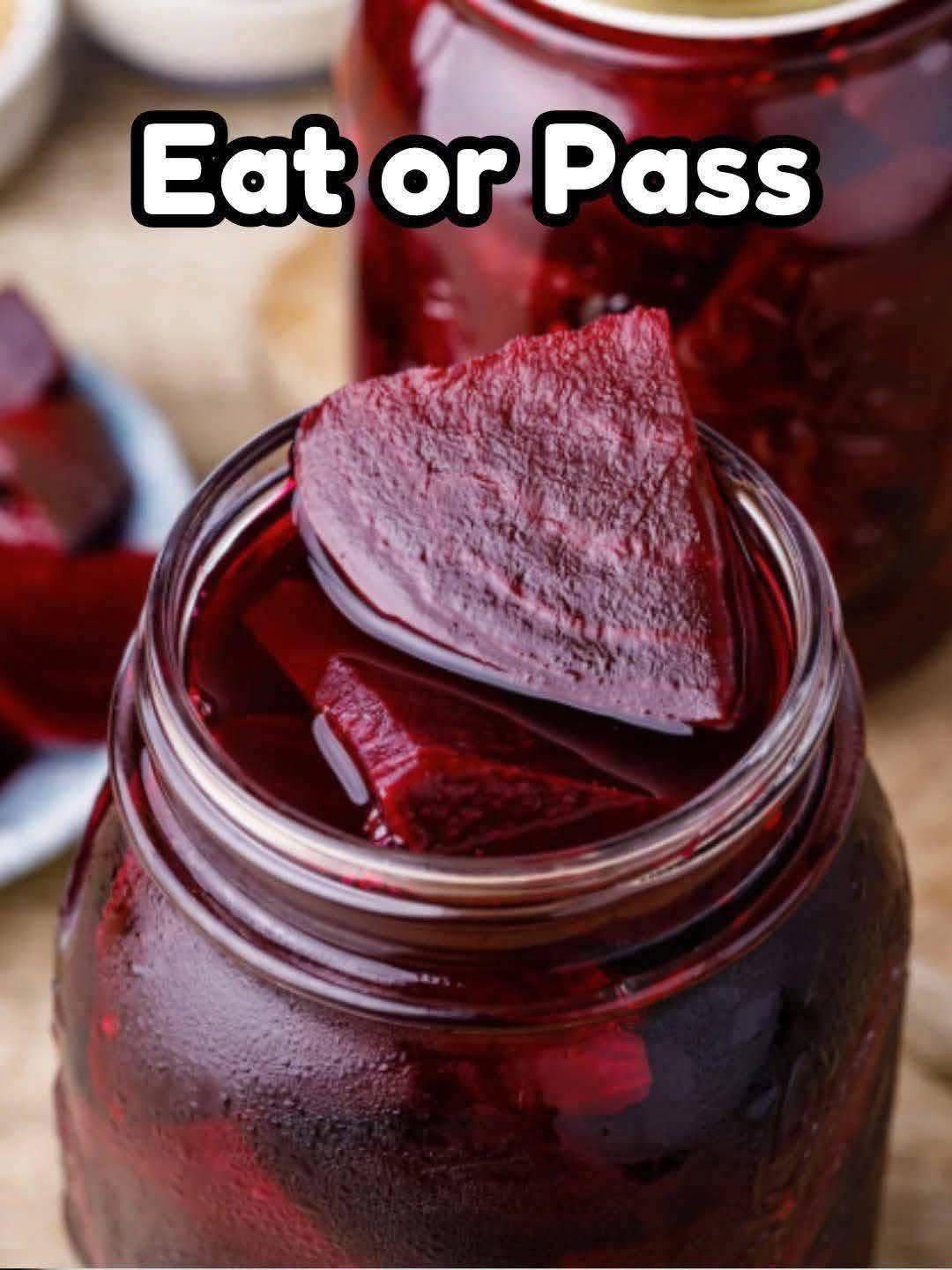Pickled beets are a vibrant, flavorful, and nutritious way to preserve this earthy root vegetable. Known for their deep red color and slightly sweet, tangy taste, they are commonly enjoyed as a side dish, salad topping, or snack. Making pickled beets at home is surprisingly simple and allows you to control ingredients, flavor intensity, and texture. This recipe includes step-by-step instructions, variations, tips, and storage guidance to help you create the perfect batch of pickled beets.
Ingredients
For the beets:
2.5 to 3 pounds of fresh beets (about 6 to 8 medium-sized beets)
Water for boiling
1 tablespoon salt (for boiling water)
For the pickling brine:
2 cups distilled white vinegar (5% acidity)
1 cup water
3/4 cup granulated sugar
1 teaspoon salt
1 cinnamon stick (optional)
1 teaspoon whole cloves
1 teaspoon black peppercorns
1/2 teaspoon mustard seeds (optional)
2 to 3 garlic cloves, peeled and lightly crushed (optional)
Optional: a small slice of fresh ginger for warmth
Instructions
- Prepare the Beets
Start by washing the beets thoroughly to remove any dirt. Cut off the beet greens and root tails, leaving about an inch of stem to prevent bleeding during boiling. Do not peel the beets at this stage.
Place the beets in a large pot and cover them with water. Add a tablespoon of salt and bring the water to a boil. Reduce heat and simmer for 35–45 minutes, or until the beets are tender and a fork easily slides into them. Cooking time will vary depending on beet size.
Once cooked, drain and allow the beets to cool slightly. When they are cool enough to handle, rub the skins off using your hands or a paper towel. The skins should peel away easily. Trim off the tops and tails completely, then slice or dice the beets into your preferred shape—round slices, wedges, or cubes all work well.
- Sterilize the Jars
While the beets are cooling, prepare your jars. This recipe makes about 3 to 4 pint-sized jars (16 oz). Wash the jars, lids, and bands in hot, soapy water. Rinse thoroughly. Place them in a boiling water bath or dishwasher with a sanitize setting to ensure they’re sterile.
Keep the jars warm until you’re ready to fill them to prevent cracking when hot liquid is added.
- Make the Pickling Brine
In a saucepan, combine vinegar, water, sugar, and salt. Stir over medium heat until the sugar and salt dissolve completely. Once dissolved, add the cloves, peppercorns, mustard seeds, and cinnamon stick (if using). Bring the mixture to a gentle boil, then reduce the heat and simmer for 5 to 10 minutes to infuse the flavors.
Remove the brine from heat and let it sit briefly. You may choose to strain out the spices or leave them in for continued flavor development in the jar.
- Pack the Jars
Divide the sliced or diced beets evenly among the sterilized jars. If desired, add a garlic clove or piece of ginger to each jar for extra flavor. Pour the hot brine over the beets, ensuring all the pieces are fully submerged and leaving about 1/2 inch of headspace at the top.
Wipe the rims clean with a damp cloth, place the lids on top, and screw the bands on just until fingertip-tight.
- Optional Water Bath Canning
If you want to store your pickled beets at room temperature, process them in a boiling water bath. Place the filled jars in a water bath canner with enough hot water to cover them by at least 1 inch. Bring to a rolling boil, then process for 30 minutes for pint jars (adjusting for altitude as needed).

Carefully remove jars using tongs and let them cool on a clean towel. You should hear a popping sound as the lids seal. Once cool, check the seals by pressing the center of each lid—if it doesn’t pop back, the jar is sealed.
For refrigerator pickles, skip this step and place jars in the fridge after cooling.
Storage and Shelf Life
Refrigerator Method: Let jars cool completely, then refrigerate. For best flavor, allow the beets to sit in the brine for at least 24 to 48 hours before eating. They will last up to 2 months in the fridge.
Water Bath Canned Jars: Store sealed jars in a cool, dark place. Properly sealed jars will last up to 12 months. Once opened, refrigerate and consume within 1 month.
Serving Suggestions
Pickled beets can be served in many ways:
As a vibrant side dish
Chopped into green salads or grain bowls
Served with goat cheese, arugula, and nuts
As part of a charcuterie or antipasto platter
Layered in sandwiches or wraps
Served with roasted meats or on top of grilled vegetables
Tips for Success
Use fresh, firm beets with smooth skin. Avoid beets that are soft or wrinkled.
Taste the brine before using. Adjust sugar, vinegar, or spice levels to suit your preferences.
You can substitute apple cider vinegar for white vinegar for a milder, fruitier flavor.
If you like a spicier beet, consider adding a pinch of red pepper flakes or sliced jalapeño to the jars.
Label your jars with the date of preparation.
Variations
Sweet and Spicy Beets: Add more sugar and red pepper flakes for a bold, sweet-heat flavor.
Citrus-Infused Beets: Add thin slices of orange or lemon peel to the jar before pouring in the brine.
Herb Beets: Add a sprig of rosemary, thyme, or dill to each jar for a herbal touch.
Golden Beets: You can use yellow or striped (Chioggia) beets for a different visual appeal and slightly milder flavor.
Onion Addition: Add thin slices of red or white onion with the beets for additional crunch and a subtle tang.
Nutritional Information (per 1/2 cup serving, approx.)
Calories: 50–70
Carbohydrates: 12–16g
Sugars: 10–14g
Fiber: 2–3g
Protein: 1g
Fat: 0g
Sodium: 200–300mg (depending on brine salt)
Rich in: Folate, potassium, manganese, and antioxidants
Pickled beets offer excellent nutritional benefits, including natural nitrates that support blood flow, anti-inflammatory properties, and digestive fiber.
